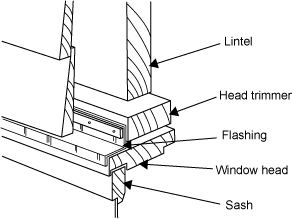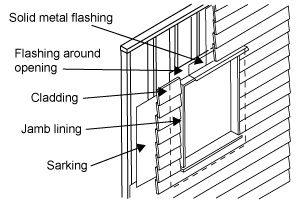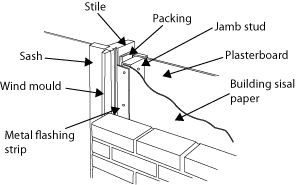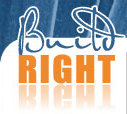Installation - Flashings
Timber window frames require flashings under the sill to stop water migrating to the inside wall linings. Side flashing is also necessary to prevent water migrating to the back of the stiles. Some manufacturers provide a groove in the stile in which to tuck the flashing.

When the head of a window may be exposed to weather, such as a window in a gable wall, the head of the window needs to be flashed to stop any water getting in.


